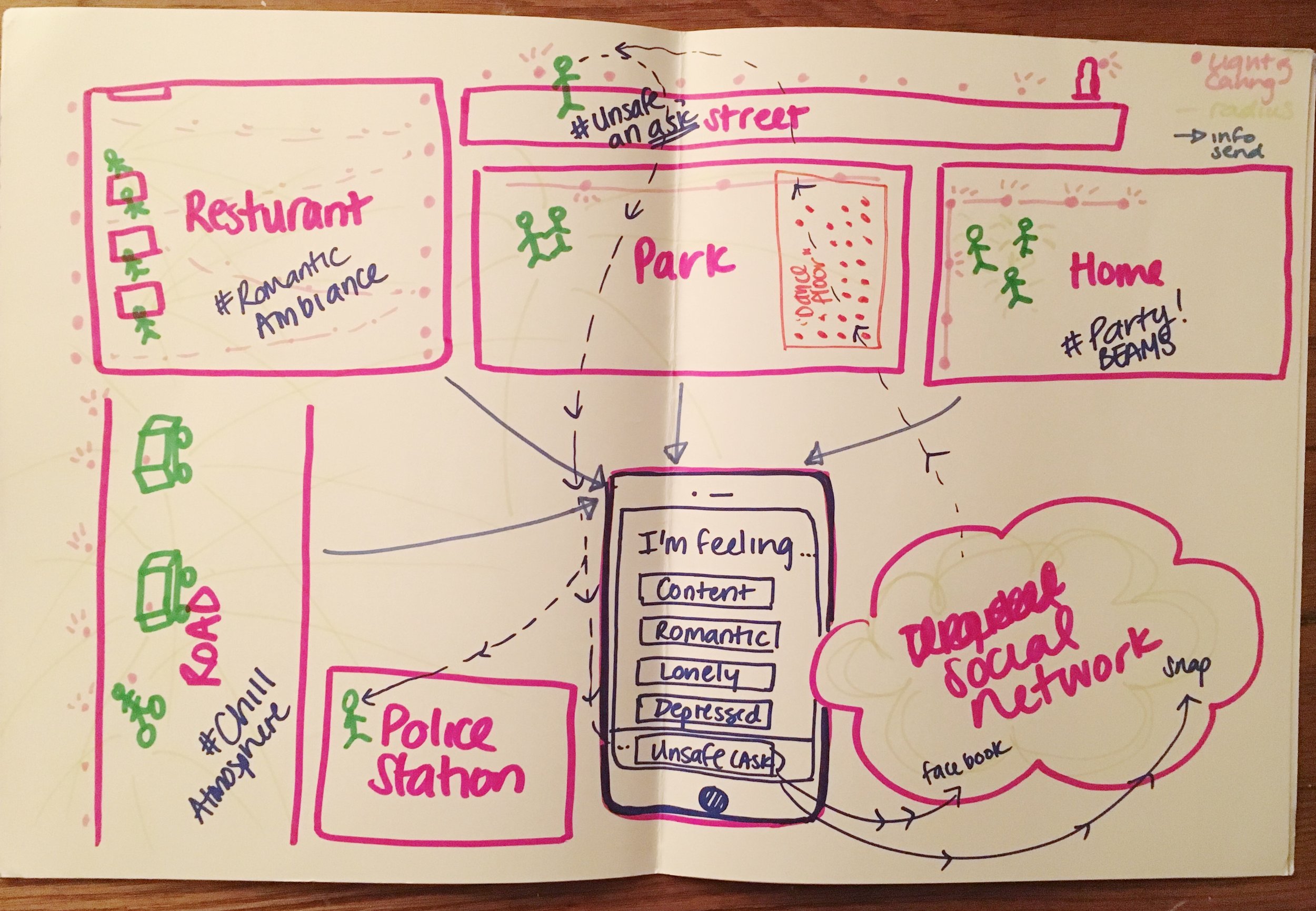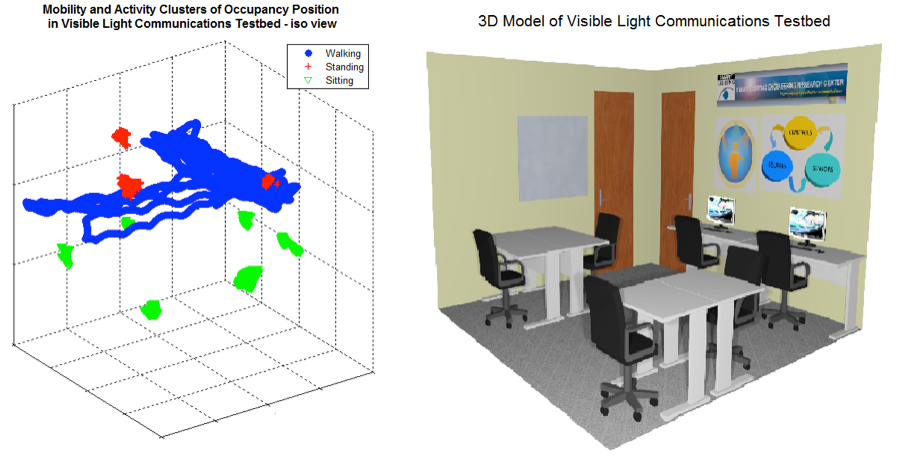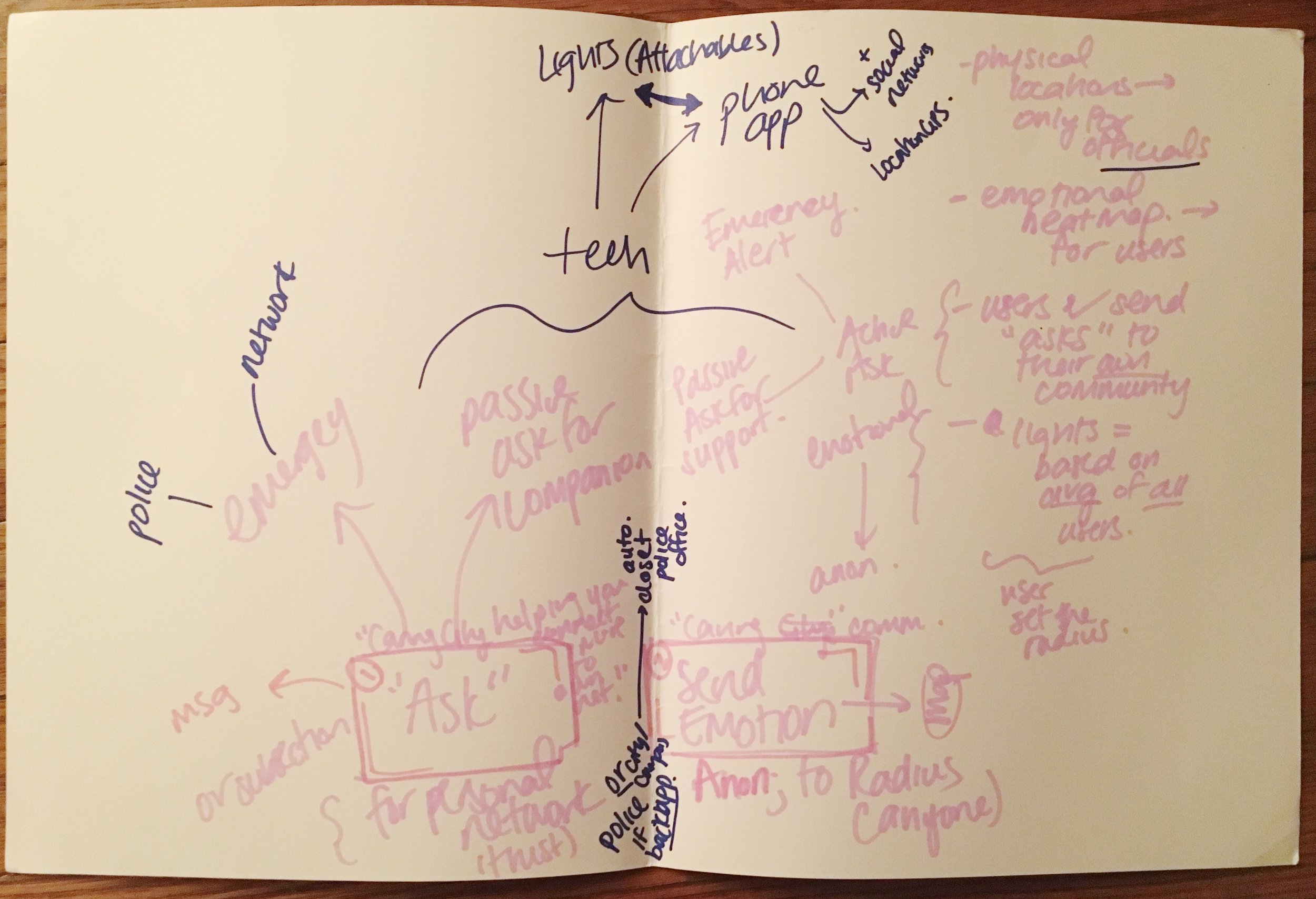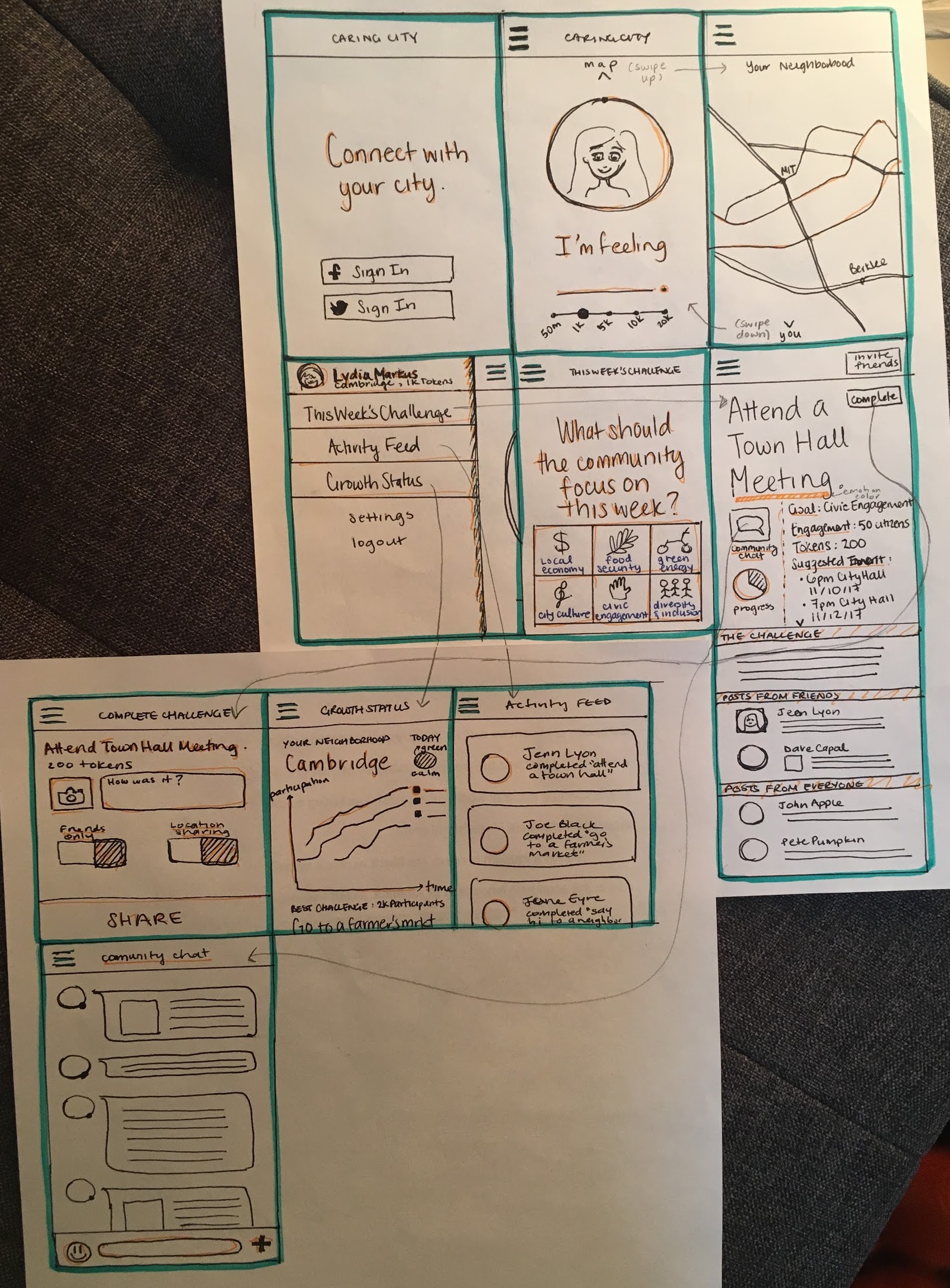Imagine a city. . .
Where you feel a greater sense of belonging in your community, through empathetic, emotional connections.
Whether that is celebrating the establishment of a new community garden, showing support after a devastating event in the world, or just expressing anguish with the endlessness of midterm season, we often share similar emotions with our physical community. How can we leverage these emotions to establish new, tangible connections?
Where residents actively engage in grassroots community challenges and city goals.
Often, the degree to which people feel integrated into their community is directly proportional to how much they contribute to the community's wellbeing. How can we do our part to support city initiatives such as sustainable living, affordable housing, and cultivating a multicultural community?
Where people from all walks of life join in dialogue about things that matter.
We shy out of our occasional desire to venture outside of our usual social circles, because there's no comfortable or accessible way to do so. How can we provide more opportunities for people to engage with city dwellers outside their usual social circles, in a meaningful way?
Living in a Caring City
Meet Tania. Tania is single mom in her early 30s, who has had a successful career as a senior account manager at the Boston branch of her bank for many years. She lives with her 10 year old son, Jake, and her Australian labradoodle, Goldie.
With Caring City, Tania connects with members of her community outside her usual social circle on an emotional level, and participates in community challenges as fun weekend activities for herself and Jake.
A Closer Look at the Product
The digital and tangible aspects of the product work together to facilitate new empathetic interactions among city dwellers, on a social network and in physical communities
Designing for a Caring City
Problem Analysis
Philips presented to us that a Caring City is a human-centered version of a Smart City. The challenge is to create a caring city with connected lighting. Through research and iterations of ideas, my design team defined a caring city as a city that facilitates community building among residents, while solving practical issues in public city spaces. We then began designing specifically toward this goal.
Research & Ideation
In research, we learn about historical and cultural human perceptions of light, as well as current lighting-related technological innovations. We begin to ideate with the concept that light is culturally associated with emotions, and that common emotions can create a sense of belonging and community among residents. How can we portray these emotions, in public city spaces?
Design Iterations
Here, I explain our thought process and decision-making in UI iterations, for the Home screen, the Community Challenges screen, and the Stories screen. Ultimately, our goal was to create an intuitive and engaging interface, that pushes forward an emotional user experience, as related to the function of the product.
Final Prototype
My design team presented to Philips an Invision app prototype, as well as a basic Arduino physical light prototype that scrapes emotions from Twitter inputs and displays corresponding hue. The Invision prototype was designed by me, and the Arduino prototype was built by my awesome team member, Sarah.
Problem Analysis
Philips Lighting set up a challenge for our design teams: How can we use connected lighting to create a more "caring" city?
"Smart City" has become a tagline for cities that implement data-driven technology to provide services and manage resources efficiently. But what is a Caring City? To Philips, a caring city shifts the focus of smart cities from the technology to humans -- it is a city as an enabler for humans. This mission can take many forms. Through research and iterations of ideas, my design team focused on the idea that a caring city facilitates community building among residents, while solving practical issues in public city spaces.
Our Design Goal
Research & Ideation
Our research focused on three areas that eventually supported ideation. We found a connection between light, different emotions that different colors of light can represent, and a caring city's potential to bring people together with empathetic experiences, through common emotions.
Design Iterations
Below are select UI decision iterations of the app. Ultimately, our goal was to create an intuitive and engaging interface, that pushes forward an emotional user experience, as related to the function of the product.
Home Screen
This is the landing screen in which users input their emotions. Our UI goal was to create a more intuitive, emotional, personal, and fuss-free user experience.
Community Challenges
In this screen, users vote for the challenge that residents should work towards this week. Our final iteration pushes for a casual, fun, low-pressure, Netflix-like user experience.
Community Challenge Chat
This is basically a chat room for each community challenge, where challenge attendees engage in dialogue. We sought to provide a more fun user experience that emphasizes the real-time quality of the chat.
Prototype Demo
Interactive Prototype
Thoughts Moving Forward
During our design iterations, one key feedback that we focused on was how to redesign so that the product can be naturally and comfortably integrated into people’s lives. It’s true — the product operates on the ideal that people either communicate on social media with emotive language, or input their emotions into the app itself — which is not immediately intuitive. With more time and user testing, we would think more about how to predict — rather than proactively solicit — user emotions, perhaps associated with the activity the user is performing, her location, the time of day, who is in her company, etc.
In relation to emotion prediction design, I shall mention two very interesting and relevant study that we came across in our research. The first is Privacy-Preserving Smart-Room Analytics. It explores action recognition performance at extremely low temporal or spatial camera resolutions, in order to facilitate intelligent interaction with the room’s occupants while mitigating the occupants’ privacy concerns. It uniquely uses cameras to analyze gestures, which reaches beyond the scope of solely location-based analytics. Emotions may be the most private of all information about people — that’s why we may lie about it on social media and project positive emotions only. The innovative development of technology that serves the user, while preserving the privacy of the user, would allow users to feel comfortable and safe with using the product — which is especially important for our product, so as to not undermine our goal of creating “caring” in the first place.
The second is Mobility and Activity Recognition in Smart Rooms. The research focuses on developing machine-learning algorithms to understand and quantify user activity within indoor spaces from low-dimensional user location data. The identification process (of objects and humans) can achieved with modalities which includes the use of visible light, infrared light, and RF signals. The velocity of movement can be calculated to determine the activity that user is engaged in (sitting, walking, standing). We think that these findings can support further exploration and expansion of the functionality of our Caring City lighting system, especially in indoor public spaces such as malls and coffee shops: to tailor lighting to users’ activities, in order to improve users’ task performances, to provide for users’ potential needs, and to augment their connectivity to electronic infrastructure, and ultimately to each other.


















